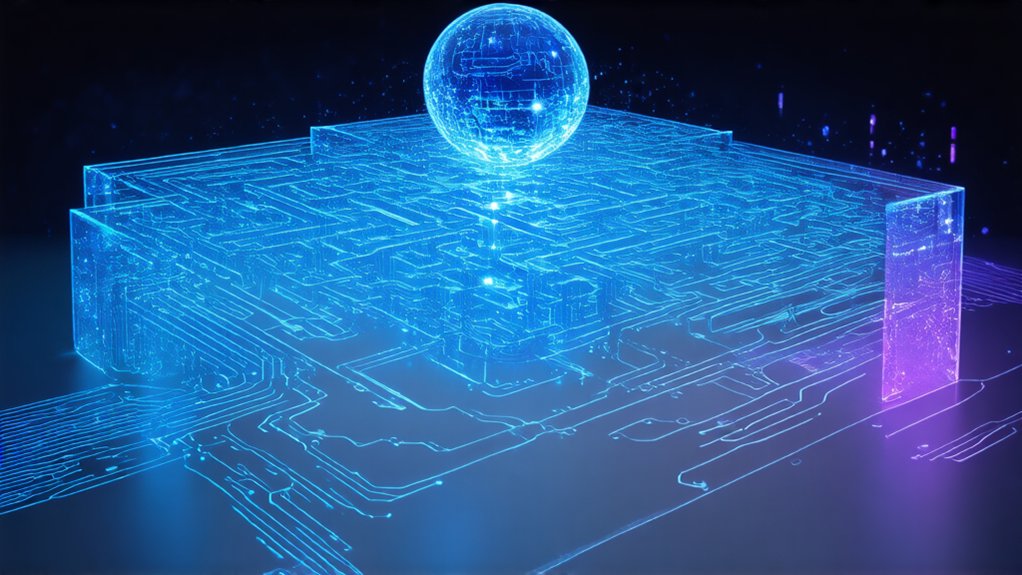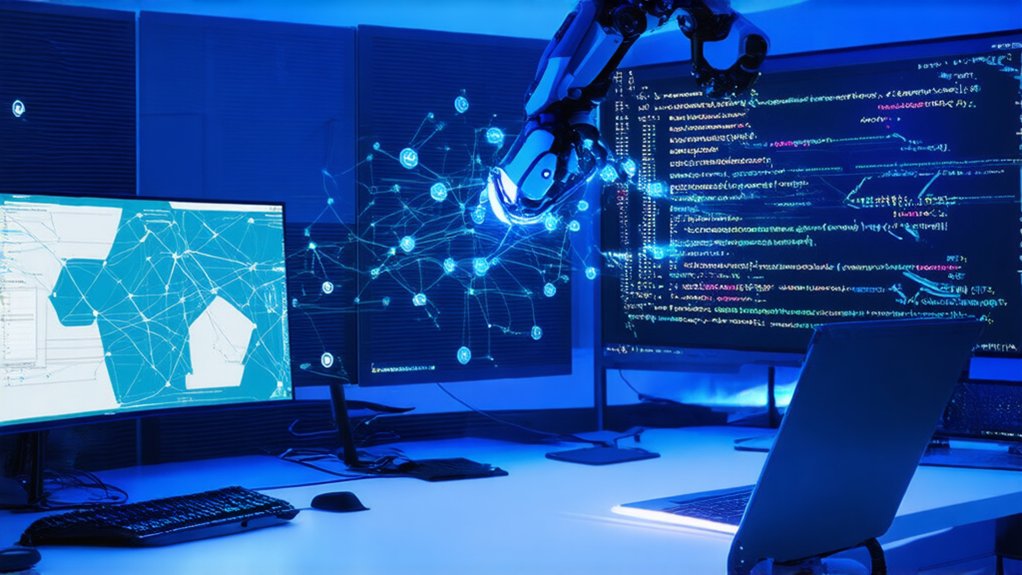Machine Learning Engineer Roadmap
Aspiring machine learning engineers immerse themselves in a demanding roadmap, tackling everything from math basics to cutting-edge AI tricks. This demanding roadmap leads to high rewards, as entry-level AI engineers earn 8.57% more than non-AI engineers. First up, foundational knowledge hits hard. Master linear algebra—vectors, matrices, eigenvalues, eigenvectors. These fuel ML algorithms, no shortcuts here.
Calculus? Yeah, differentiation and integration for optimization and backpropagation. Probability and stats follow: distributions, Bayes’ theorem, hypothesis testing. Oh, and programming fundamentals—Python’s king with its ML libraries, R as a sidekick.
Data structures and algorithms? Arrays, lists, trees, searching, sorting. Build efficiency or get left behind.
Core concepts ramp up the intensity. Supervised learning includes linear regression, logistic regression, decision trees, support vector machines, neural networks. Unsupervised? Clustering like K-means, dimensionality reduction with PCA, anomaly detection. To excel, engineers must gain hands-on experience with frameworks like TensorFlow and PyTorch for practical implementation. Data cleaning is crucial as it directly impacts the model’s performance.
Core concepts crank up the intensity: supervised learning’s regressions, trees, neural nets; unsupervised’s K-means clustering and PCA wizardry.
Feature engineering—extraction, selection, scaling—makes models shine. Hands-on with frameworks: TensorFlow, PyTorch, scikit-learn. Immerse yourself in Kaggle projects; it’s trial by fire, folks.
Software engineering keeps it real. Code clean, scalable, efficient—blunt truth, sloppy work tanks careers. Version control with Git and GitHub? Essential for teamwork.
API design, microservices for ML integration. Cloud basics on AWS, GCP, Azure handle deployments. Large-scale data systems? Handle that chaos.
Deep learning adds flair. CNNs for computer vision, RNNs and LSTMs for sequences. Transformers? Attention mechanisms in GPT and BERT—game-changers, if you can wrap your head around them.
NLP involves text processing, sentiment analysis. Reinforcement learning trains agents for decisions. Emerging subfields? Keep chasing, it’s endless.
MLOps bridges the gap. Principles like deployment, monitoring, versioning. Tools: Docker, Kubernetes, MLflow. CI/CD pipelines for testing. Model governance, security—reproducibility isn’t optional.
AI research demands curiosity. Follow arXiv papers on deep reinforcement learning, transformers. Seminal works fuel innovation, but staying current? It’s a relentless grind, sarcasm aside—good luck with that work-life balance.




